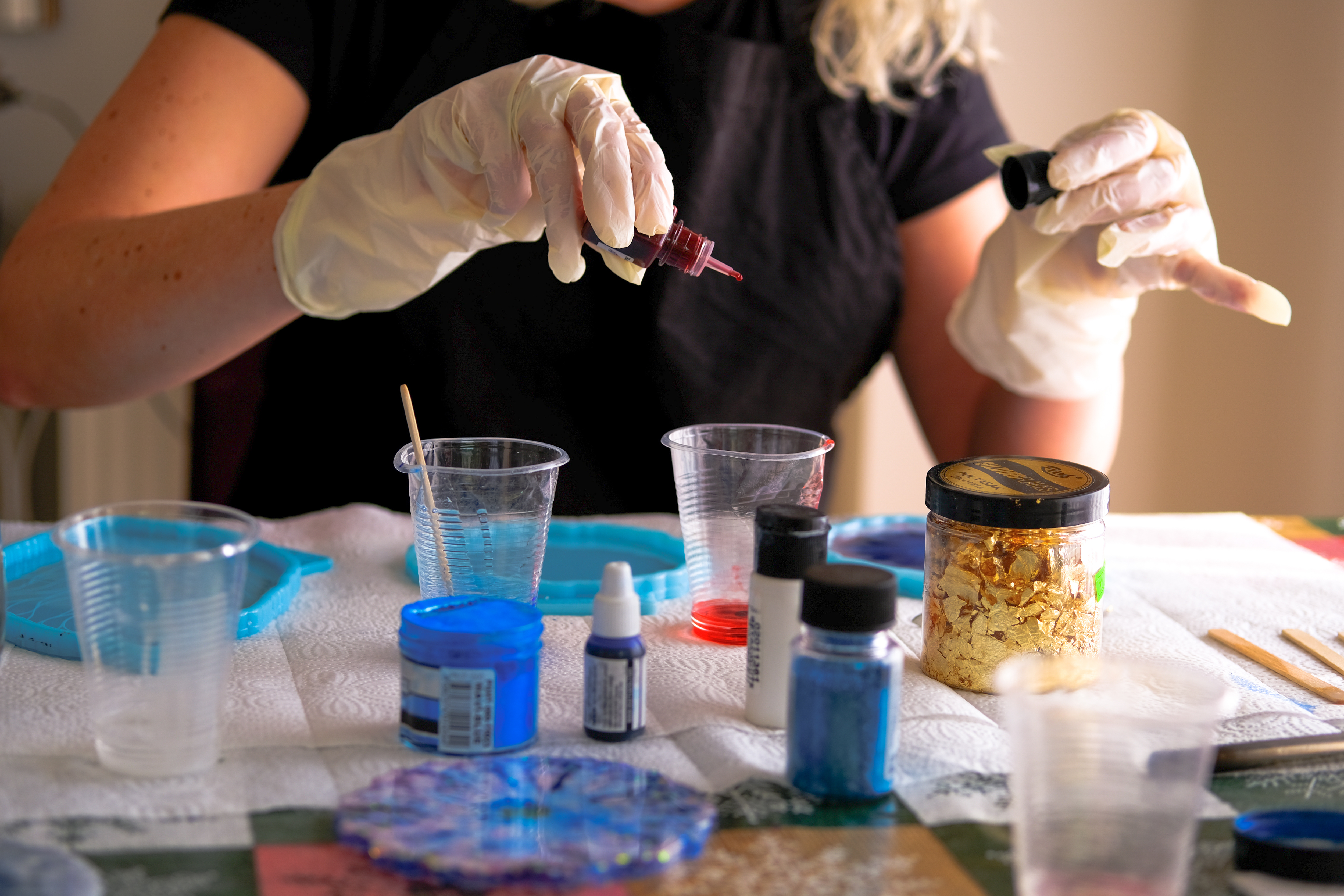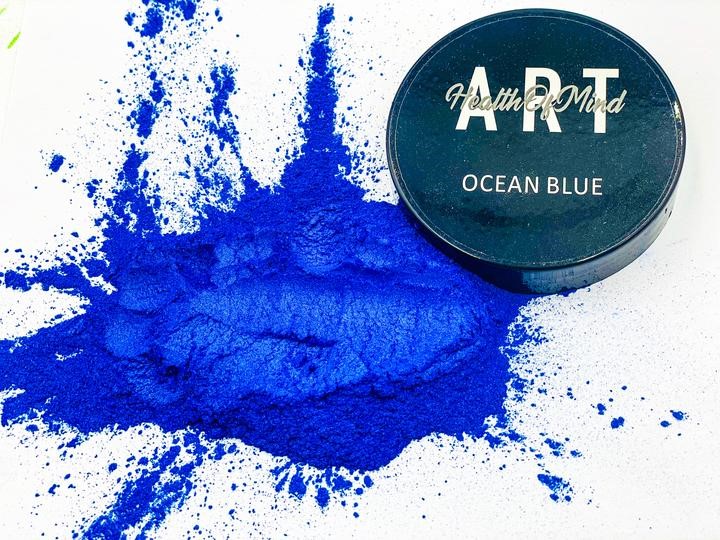Dipping your toes into the resin pool, you’ll find it’s brimming with terms like resin, epoxy, epoxy resin, epoxy adhesives – so… are they the same, are they different? Let’s dive!
‘Resin’ is the umbrella term under which all the aforementioned reside. Resin is a natural occurring substance mostly found in plants. As woodworkers we can think of tree resin. In fact, mother nature gets the credit for producing the world’s first embedded resin artwork – trapping insects in amber (fossilized resin) 100 million years ago. Now that’s a long cure time! The resin we use today is combined with other agents, and so is no longer considered a natural but rather a synthetic substance.

Let’s look through the three most common types of synthetic resins…
Polyester Resin
Polyester Resin, the first synthesised resin compounded in 1847, produces a hard fibre, block or film with very minimal shrinkage. It sets at room temperature to a colourless finish, however it does yellow over time due to UV exposure. Polyester resin is more brittle than other types of resin, but with proper reinforcement from materials such as fibreglass, it is commonly used as waterproof linings in the marine, automotive and construction industries.
Epoxy resin
Whilst epoxy commonly refers to the end cured product, epoxy resin is specific type of resin. It is commonly sold as a two-part mixture of resin and hardener, or as a single composition resin which is hardened by UV light. Epoxy resin is the most widely available type of resin and considered to be all-purpose.
Epoxy resin has a steady cure time and produces a hard end product. Epoxy resin is ideal for woodworking applications, as it doesn’t mind moisture, such as that found within timber. Epoxy resin requires a dry and cool curing environment, and unlike some other resins, is forgiving if not mixed to perfection.
Polyurethane resin
Polyurethane resin is a versatile resin that can be cured as a foam, rubber or hard plastic. Once polyurethane resin is mixed it hardens very quickly, so it is essential that the mixing and pouring stages are completed swiftly. Whilst it does shine when it comes to UV and scratch resistance, polyurethane resin is not a fan of moisture, and so is not a good choice for humid environments or first choice in woodworking projects. Unless the timber is fully dried, the expansion and contraction of timber can cause polyurethane resin to crack.
A note on hardeners
The second element of two-part synthetic resins is a hardener. The chemical reaction between the resin and hardener, known as polymerization, causes a build-up of heat, in turn causing the resin to harden and cure. The more heat that is released from this reaction, the quicker the resins cures and vice versa. The type of hardener will have a significant impact on the end product and the journey to get there. We will go into more depth about hardeners in a future post.
Pigments
Adding pigments to resin projects is an easy way to elevate the look of the finished piece, opening up a world of possibilities.

Liquids and pastes are the ideal choice for smooth and even tone in colour applications. They are easy to mix and disperse well throughout resin. Liquid dyes are highly pigmented, so a little goes a long way. The amount of pigment added will increase the opacity of the piece, allowing for a spectrum of clear tinted works or fully opaque pieces.

Powder pigments will give your project a metallic or pearlescent effect, and are used for bright and striking designs. Created from mica particles, powdered pigments will catch the light and can be used to create irregular patterns and swirls. These pigments need to be mixed thoroughly to ensure the powder fully dissolves and avoid clumping.
So now we’ve worked our way through the basics of resin, let’s briefly touch on the basic uses.
Coating Resin
 Coating resins, also known as doming resins, are typically Epoxy resins. Coating resins have a higher viscosity than casting resins, and so achieve a smooth and self-levelling even surface. A cured coating resin offers excellent resistant to moisture, high temperatures, chemicals and abrasion.
Coating resins, also known as doming resins, are typically Epoxy resins. Coating resins have a higher viscosity than casting resins, and so achieve a smooth and self-levelling even surface. A cured coating resin offers excellent resistant to moisture, high temperatures, chemicals and abrasion.
Casting Resin
 Casting resin has the ability to penetrate small areas and so is ideal for moulds, and filling gaps and cracks. Casting resins have a low viscosity that naturally release most air bubbles and allow for thick self-levelling layers. Due to the watery consistency of casting resin and the nature of deep pours, casting resin will take the longest to cure.
Casting resin has the ability to penetrate small areas and so is ideal for moulds, and filling gaps and cracks. Casting resins have a low viscosity that naturally release most air bubbles and allow for thick self-levelling layers. Due to the watery consistency of casting resin and the nature of deep pours, casting resin will take the longest to cure.
Epoxy Adhesive
 Quite self-explanatory, these resins are used for adhesion purposes across many different types of materials such as wood, metal, concrete, glass, plastics and stone. They are some of the strongest adhesives that you’ll find on the market, and will mostly be your Epoxy resins. Most will be a two-part mixture, however single component Epoxy adhesives are available, usually with a faster cure time.
Quite self-explanatory, these resins are used for adhesion purposes across many different types of materials such as wood, metal, concrete, glass, plastics and stone. They are some of the strongest adhesives that you’ll find on the market, and will mostly be your Epoxy resins. Most will be a two-part mixture, however single component Epoxy adhesives are available, usually with a faster cure time.
When to use glue vs an Epoxy adhesive?
When deciding between glue and Epoxy, the choice is dependent on the task and materials at hand.
Glue offers a bit more forgiveness during the application process, and is the go-to choice for projects needing flexibility in bonding. It is cheaper and simpler to use than epoxy adhesives, though it can get a tad messy. Glue tends to be an eco-friendlier choice as it is usually comprised of natural materials such as resin or gum, unlike the chemical composition of Epoxy.
Epoxy adhesives are known for their superior strength and water resistance. Their robustness makes them ideal for heavy-duty applications, particularly when lots of resistance is involved. The consistency of Epoxy adhesives makes it ideal for filling gaps, especially as it does not shrink as it cures. It is perfect for upright jobs, thanks to its thick texture that won't drip while it sets, as well as it’s quick hold and set time. Finally, you can mix pigments into your Epoxy adhesive to match your surface.
Now that we've delved deeper and untangled the seemingly similar terms of resin, you'll be able to spot the difference on the shelf and select the right resin for the job.
Shop Resins Now!